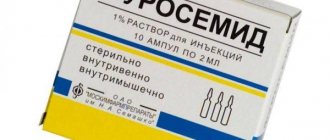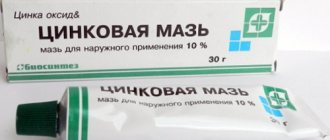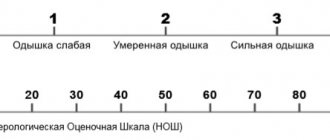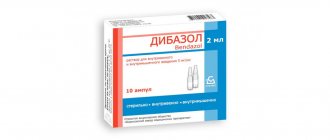In cardiological practice, Magnesia to lower blood pressure is used to relieve attacks of arterial hypertension, since it is one of the fastest-acting antihypertensive drugs. The medicine provides rapid expansion of the vascular lumen, thereby reducing blood pressure. Timely stabilization of blood pressure (blood pressure) helps prevent the development of acute vascular complications such as stroke and acute heart failure. Magnesia is used as a first aid remedy to eliminate an attack. What is the mechanism of action of the drug and what are the features of its use?
Magnesium sulfate as a laxative
For 1 glass of boiled water you need to take 15-30 g of powder, stir everything and drink. To enhance the laxative effect, you need to consume as much warm liquid as possible. In this case, you will be able to notice the result within 30-40 minutes.
In no case should you take magnesium sulfate for several days in a row, otherwise you can damage the gastric mucosa, which can lead to serious consequences. For acute constipation, the product is used once. To empty the bowel, it is sometimes used together with anthelmintic drugs. For chronic constipation, enemas are done using a solution. To do this, you need to take 25 g of powder and dilute it in half a glass of water.
Pharmacological properties for hypertension
Experts often recommend administering magnesia at high blood pressure due to the rapid achievement of the pharmacological effect. The drug has a wide range of pharmacological effects, namely:
Blood pressure medication Amlodipine
- reduces blood pressure levels;
- expands the vascular lumen;
- stabilizes myocardial activity;
- normalizes heart rhythm disturbances;
- reduces the excitability of the nervous system;
- removes waste products from the body.
The effect of the drug manifests itself immediately after administration into the body, due to which blood pressure levels quickly normalize. The maximum pharmacological effect appears after 30-60 minutes. The therapeutic effect lasts for 3-4 hours.
Contraindications
You should avoid taking magnesium sulfate if:
- bleeding in the rectum;
- dehydration of the body;
- intestinal obstruction;
- inflammation of appendicitis.
Should be taken under medical supervision if:
- inflammation of the gastrointestinal tract;
- respiratory problems;
- renal failure.
Mechanism of action for high blood pressure
What mechanism of action does magnesium have, does it reduce blood pressure or not? With high blood pressure, magnesium helps to dilate the blood vessels of the brain, which allows you to normalize blood pressure in a short time. The drug acts when an active substance enters the body, which expands the vascular bed, relieves convulsions and reduces swelling of brain tissue.
The effect of the medicine is also that magnesium is a calcium antagonist. As a result of the penetration of magnesium into the body, it displaces calcium ions, which leads to a reduced concentration of acetylcholine, a substance that regulates vascular tone and the transmission of nerve impulses.
The drug is a cardioprotector, promoting the expansion of coronary arteries and preventing the formation of blood clots
Magnesium sulfate has a sedative effect and also accelerates renal filtration, as a result of which the volume of urine increases, thereby removing excess fluid. The medication is able to quickly and effectively stabilize blood pressure, so the opinion that it increases tonometer readings is erroneous.
How to take Magnesium Sulfate for weight loss
Before dieting, it is necessary to cleanse the intestines. Magnesium sulfate in this case is intended for one-time use. This method should not be used frequently, since the active substance irritates the gastric mucosa and can ultimately cause dysbacteriosis.
Those who want to lose weight need to add 200 g of powder to the bath. This bath should be taken for 20 minutes before bedtime. The course contains no more than 15 such procedures. It should be done no more than twice a week. The effect is achieved as follows: unnecessary fluid leaves the body, swelling disappears, and metabolic processes improve.
Composition and release form
Magnesia is an effective medicine that contains one active substance – magnesium salt of sulfuric acid. There are no additional or auxiliary components.
The drug has numerous pharmacological effects, which depend on the route of administration into the body. There are the following dosage forms for using the drug:
- ampoules of 10 ml at a concentration of 25%;
- 5 ml ampoules at a concentration of 25%;
- powder for preparing a suspension;
- tablets in combination with B vitamins.
Using Magnesia for a hangover
Magnesii sulfas is a drug successfully used in medicine to relieve hangover symptoms. The drug is mainly used in cases of severe alcohol withdrawal as a result of consuming significant doses of alcoholic beverages. Its action is based on replenishing the body with a large amount of magnesium. In addition to alcohol intoxication, other factors lead to a lack of this element in the body:
- long-term use of certain medications;
- too poor diet;
- regular stressful situations;
- strong physical activity.
How to take magnesium after a hangover to restore the body? To do this, it is recommended to use the product orally in powder form. If you are interested in magnesium for hangover dosage , this should be done two to three times every hour. Magnesium sulfate begins to act 30 minutes after the first use, providing the following effects:
- cleanses the body of alcohol breakdown products;
- relieves headaches;
- normalizes blood pressure;
- relieves swelling;
- has a calming effect.
However, it is not recommended to treat a hangover with magnesium B6 on your own without first consulting a specialist. The essence of the drug’s action is based on the removal of breakdown products of alcoholic beverages.
Ethanol, after entering the body, begins to break down under the action of enzymes produced by the liver. The result of this process is often a large number of poisonous and very toxic compounds. They gradually poison the body, disrupting the functioning of all its systems. The diuretic and laxative effect of Magnesia significantly accelerates the process of their removal from the body, thereby contributing to a more rapid improvement in the human condition.
Is it possible to combine Magnesia and alcohol?
If you carefully read the instructions for the product, you can find a paragraph that states that magnesium sulfate and alcoholic beverages are completely incompatible. This statement is especially relevant for significant doses of alcohol. If you violate this requirement, the effect of using the drug will be nullified.
Abuse of alcoholic beverages will put excessive strain on the kidneys. This is due to the fact that the overwhelming amount of magnesium sulfate is excreted through the urinary system. It should be taken into account that ethyl alcohol initially stimulates the central nervous system, and then also quickly causes its inhibition. Magnesia also has sedative properties.
That is why the combination of alcohol consumption and intravenous administration of magnesium B6 is prohibited, so as not to cause excessive inhibition of the central nervous system. But there are no restrictions on the use of the drug in the form of lotions and compresses.
Small doses of alcoholic beverages will not cause any complications even when consumed simultaneously with Magnesia. However, with excessive libation, negative reactions may occur such as the lack of the expected effect from the use of the drug, the deposition of kidney stones, depression of the nervous system, accompanied by drowsiness, nausea, lethargy, and sometimes coma.
Side effects
In some cases, after using the drug, side effects are observed, for example:
- Arrhythmia.
- Nausea and vomiting.
- Dizziness and migraine.
- Decreased body temperature.
- Spasmodic pain in the abdomen.
- Increased anxiety.
- Increased sweating.
- Flatulence.
- Loose stools, etc.
Magnesia intramuscularly or in powder form is very effective for a number of diseases (in the case of hypertension, pregnancy, etc.).
However, possible contraindications should be taken into account and the drug should be used strictly as directed, without exceeding the permissible dosage.
The course of treatment usually lasts 1-3 weeks. But in each specific case, the timing may vary slightly. It is recommended to check with your doctor for details.
What is it prescribed for?
Magnesia is prescribed for various diseases, ranging from hypertension to epilepsy and cerebral edema (as an independent treatment or as part of complex therapy). Indications for use of the drug are described below.
For high blood pressure
Intramuscular injections for high blood pressure are considered ineffective, since the drug does not begin to act immediately, but only after 1-1.5 hours. The therapeutic effect lasts up to 4 hours. Among other things, the injection can cause inflammation with subsequent formation of a hematoma or abscess.
Injections are usually given by emergency personnel to relieve blood pressure in an emergency.
Are injections with Magnesia effective for high blood pressure? This is described in the video:
During pregnancy
In gynecology, the drug is prescribed to pregnant women:
- if there is a threat of miscarriage (due to uterine hypertonicity),
- with gestosis (a complication of late pregnancy, leading to oxygen starvation of the fetus),
- in case of acute magnesium deficiency in the body (accompanied by frequent dizziness and muscle cramps),
- to remove excess fluid from the body and relieve swelling during pregnancy, etc.
For children
If children have constipation, use magnesium sulfate powder, which is diluted in 100 ml of warm boiled water.
The dosage is calculated as follows: 1 gram of the drug is multiplied by the 1 year of the child (for example, a child aged five years can be given no more than 5 g of medicinal powder per day. To prepare enemas, a bag of powder is dissolved in 100 ml of warm clean water, after which the product is injected into rectum.
To cleanse the intestines
The drug is used not only for constipation, but also to cleanse the intestines and the body as a whole of accumulated waste and toxins. The procedure is carried out both in a hospital setting and at home.
Therapy is carried out through an enema:
- A bag of Magnesia powder (20-30 g) is diluted in 100 ml of warm water (preferably filtered).
- The prepared solution is injected into the anus, and after about 1-1.5 hours the body is cleansed naturally (i.e., toxins and other harmful substances are eliminated along with feces).
- But one procedure is not enough to completely cleanse the body.
The course of treatment is determined by the doctor. In this case, it is necessary to take into account existing contraindications.
For weight loss
For weight loss - in addition to treating diseases, Magnesia is successfully used for weight loss: it is used internally as a laxative (2 sachets of powder per glass of water) or in the form of baths (take about 100 liters of warm water, in which 4 sachets of magnesium sulfate powder of 25 are dissolved g and 0.5 kg of table or sea salt).
The duration of the bath is no more than 25 minutes. After the procedure, the skin must be wiped dry with a towel and lubricated with moisturizer.
In herbal medicine
Magnesia in physiotherapy - compresses are made on the basis of the drug and electrophoresis is performed.
For compresses, use a 25% solution, which is soaked into a gauze pad and applied to the sore spot (bump, swelling, etc.). After 6-8 hours, the skin is washed with warm water.
Compresses have a warming effect and are used for diseases of the joints and muscles.
Electrophoresis is carried out in a hospital setting, using a 20-25% solution. Such procedures improve blood circulation and normalize a person’s psycho-emotional state.
In which case Magnesia is prescribed is described in the video:
What is the drug
This is a medicine whose main active ingredients are magnesium sulfuric acid salts. The drug is also known under other names, such as: Epsom salts, magnesium B6, magnesium sulfate. It is successfully used in various areas of healthcare due to its wide spectrum of action. Magnesia copes well with the following tasks:
- calms the nervous system;
- causes a mild diuretic effect;
- dilates blood vessels;
- causes a laxative effect;
- relaxes the muscles of the uterus;
- stabilizes heartbeat;
- improves bile flow;
- relieves spasms;
- has an analgesic effect.
Magnesia is initially a powder from which suspensions are prepared. In pharmacies it is possible to purchase a ready-made solution for injection. It is the method of administration of the solution that determines what properties the drug will exhibit.
For maximum effect, it is recommended to administer it intramuscularly or intravenously. In this case, it will have an anticonvulsant, antispasmodic and sedative effect. When intramuscularly , it must be injected deeply using the two-step method. If magnesium sulfate is administered intravenously, it should be done slowly. Regardless of the type of injection, the effect of the medication is aimed at:
- exclusion of cardiac arrhythmia;
- vasodilation;
- elimination of seizures;
- eliminating anxiety.
If the dose is exceeded, it can have a hypnotic and narcotic effect on humans. Intramuscular administration manifests its effect after 60-90 minutes and can last up to 4 hours. Intravenous treatment begins to act almost instantly, but its effect lasts for 30 minutes, after which it weakens significantly.
If you plan to use the oral method of taking the medicine, it will cause a laxative and choleretic effect within half an hour to an hour after its use. The effect lasts up to 6 hours.
An effective remedy for severe poisoning with salts of heavy metals, for example, mercury, arsenic, lead. MgSO4 combines with toxic substances and promotes their rapid elimination from the body due to its diuretic and laxative effect.
However, Magnesia is not always used internally. It has found application in external treatment. It can be used to perform antiseptic treatment of wounds. It is successfully used for electrophoresis, preparing lotions, and healing baths. When compresses with magnesium sulfate are applied, blood flows to this area, providing relief from inflammatory reactions and pain relief.
Features of application
Experts do not recommend using a drip with Magnesia solution to treat arterial hypertension. When the solution is administered by drip, the patient develops more side effects. Therefore, to normalize the indicators, the patient is given intramuscular and intravenous injections. The product can be used only according to indications, as it is quite harmless. Patients are contraindicated to use the solution on their own; it must be administered by a specialist.
In some cases, magnesium sulfate is used for low blood pressure, despite the fact that it is contraindicated in hypotensive conditions. As a rule, with low blood pressure, it is used as a sedative for several days, subject to strict adherence to the administration algorithm, ensuring the absence of side effects.
Intravenous injection to normalize blood pressure
With intravenous administration of Magnesia, the therapeutic effect appears instantly. Experts prescribe an injection of medication to eliminate a hypertensive attack, myocardial infarction, and in the complex treatment of arrhythmia and angina pectoris. In most cases, pathological conditions are accompanied by high tonometer values.
The dose is selected depending on the achievement of the required clinical effect and the concentration of magnesium in the bloodstream. The blood pressure medication is administered intravenously very slowly. The daily dose is from 5 to 20 ml of a 25% solution of the product. The introduction is jet, lasting 5-7 minutes.
With the rapid administration of magnesium sulfate, the patient develops complications:
- dizziness attack;
- increased sweating;
- difficulty breathing;
- hot flash.
If complications develop, the rate of administration must be reduced. The clinical effect lasts for 30 minutes.
Intramuscular injection to lower blood pressure
Magnesia intramuscularly under pressure is used according to the scheme: 1 ampoule of a 25% solution in an amount of 10 ml. Since intramuscular injection is accompanied by painful sensations, the drug is combined with Lidocaine or Novocaine. You can also give an anesthetic injection before directly administering magnesium sulfate. For one ampoule of magnesium sulfate, use an ampoule of anesthetic drug.
Under pressure, the drug is administered intramuscularly according to the following algorithm:
- The patient takes a horizontal position on his side or stomach.
- The needle is inserted into the upper quadrant of the buttock.
- The injection site is treated with an alcohol solution.
- The medicine is administered slowly over 2 minutes.
- The placement of the needle is deep, at a right angle.
Important! With an intramuscular injection of magnesium, there is a high risk of the formation of infiltrates. Therefore, elderly patients are given a reduced dosage, since their kidney filtration capacity is reduced.
The effect of intramuscular administration of the drug is weak, especially for relieving a hypertensive attack. In some situations, this method is used in a hospital with a pronounced increase in blood pressure that is not amenable to antihypertensive medications. The therapeutic effect is observed, but it is insignificant. Therefore, most doctors do not use this medication to reduce indicators.








